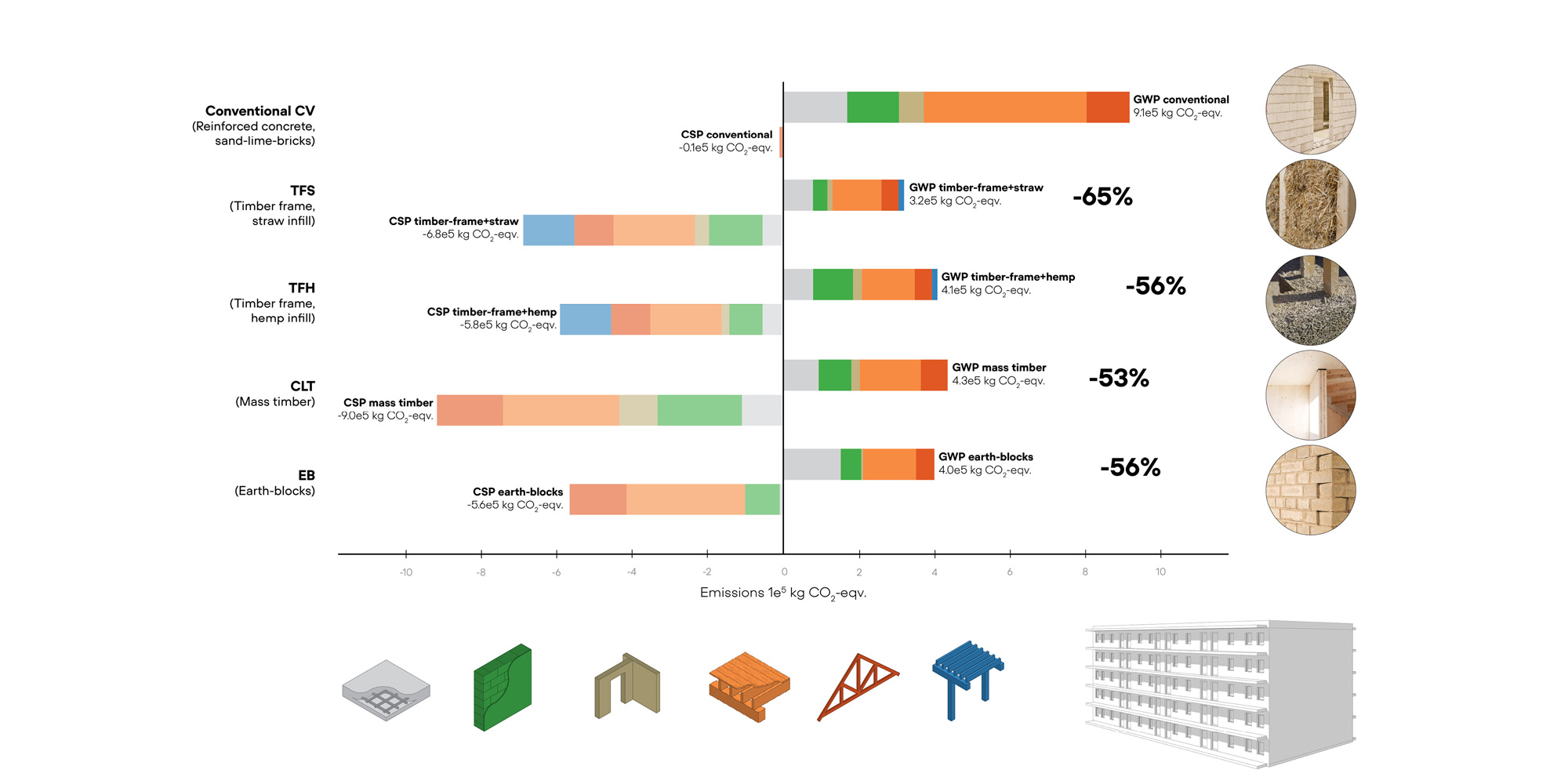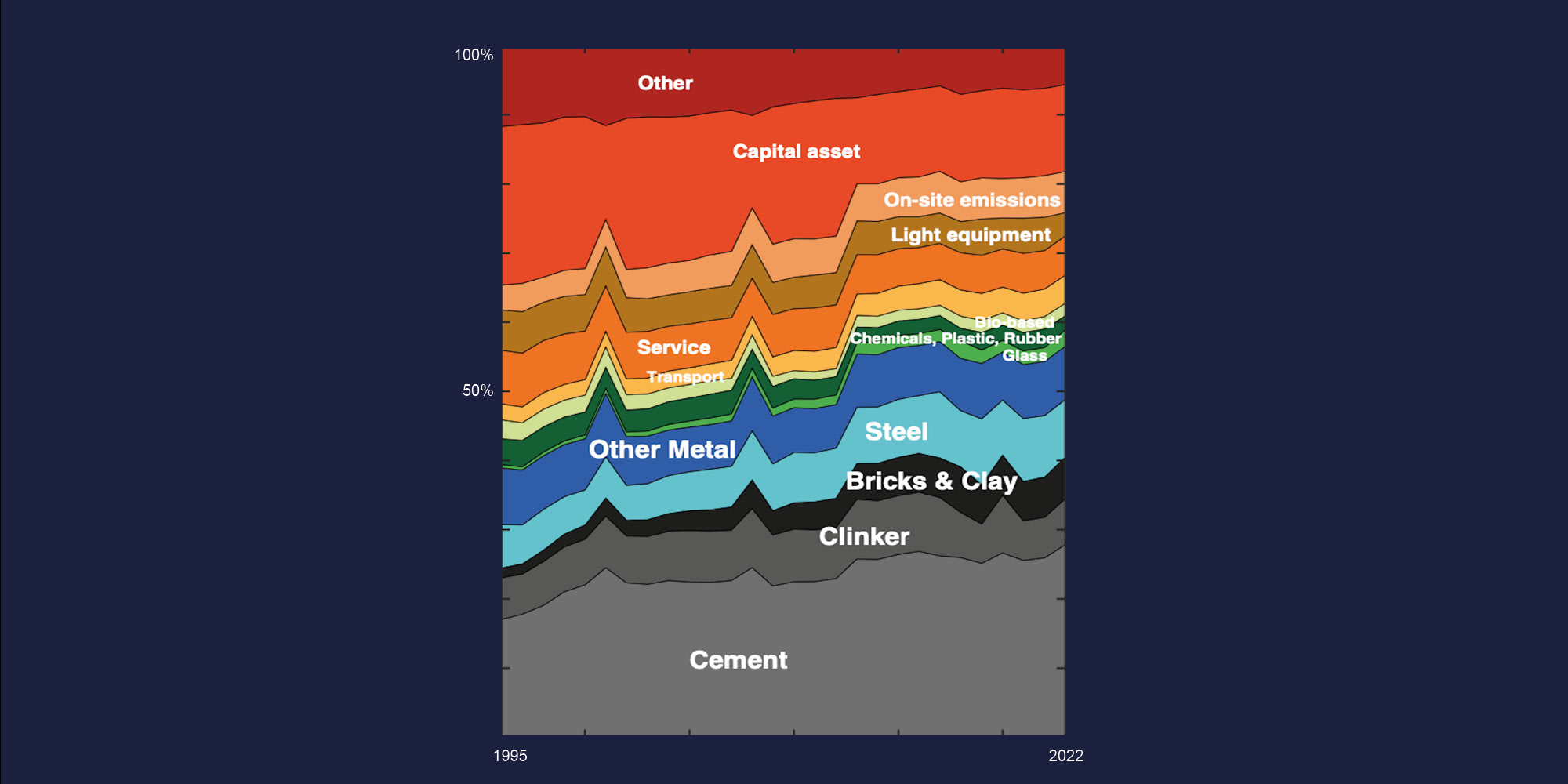
Visualisation of key results, adapted from the study © Bauhaus Earth, 2025
All articles
Best Paper Award for Bauhaus Earth's Study on Nature-based Building Components
Date
28/11/2025
Read time
0
minutes
Our paper Evaluating Nature-Based Material Choices for Structural and Envelope Components of Buildings, received the Best Paper Award at the CISBAT Conference 2025, hosted by EPFL and the Smart Living Lab in Lausanne, Switzerland. The study shows how nature-based materials can cut embodied emissions in construction while advancing regenerative building practice through long-term carbon storage and ecological restoration.
The recognition highlights both the potential of nature-based building components and our multidisciplinary approach at Bauhaus Earth, where scientists and practitioners work together to connect rigorous research with real-world design and construction.

Key findings of the study :
A spectrum of nature-based solutions: This research pushes beyond the conventional vs. timber binary, demonstrating that a diverse range of nature-based approaches, including mass timber, timber-frame with hemp or straw infills, and earth construction. All of them achieve substantial emission reductions (53-65% relative to conventional baseline) whilst storing significant carbon over their lifetime.
Buildings as carbon sinks: In all nature-based scenarios, carbon storage potential exceeds embodied emissions, meaning these buildings function as net carbon sinks for as long as the bio-based materials remain in use. This underscores the critical importance of designing for longevity and planning for material reuse to maximise the climate benefits of nature-based construction.
Fast-growing fibres deliver multiple benefits: Straw and hemp both combine strong thermal performance with rapid renewability and minimal processing emissions. As agricultural byproducts and fast-rotation crops, they deliver climate benefits on shorter timescales than timber whilst requiring less material volume for equivalent performance.
Reducing pressure on forest resources: Timber-frame systems with bio-fibre infills achieve lower overall emissions than mass timber whilst using significantly less wood. This potentially eases demands on forest ecosystems whilst delivering on climate ambitions.
Floor systems show highest impact potential: Floors present the greatest potential for both emission reductions and carbon storage across all scenarios, due to their high surface area and material-intensive performance requirements.
There is no universal solution: Each material pathway involves distinct trade-offs between process emissions, carbon storage, resource efficiency, and building performance. Selection should reflect local material availability and specific project requirements rather than universal prescriptions.
Journal of Physics
CISBAT Special Issue
Press Gallery
Partners

414films%20(3).jpeg)
-web-(c)-414films.jpg)



